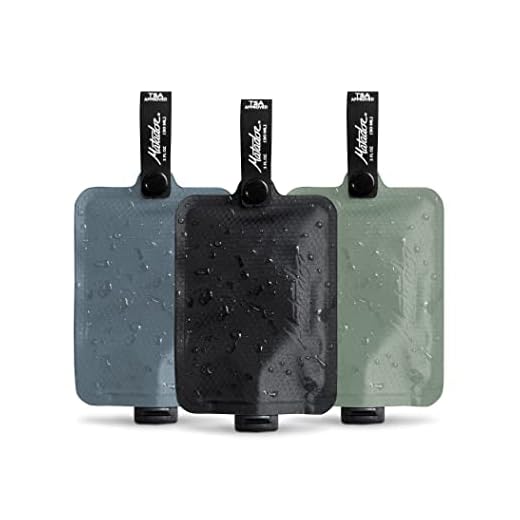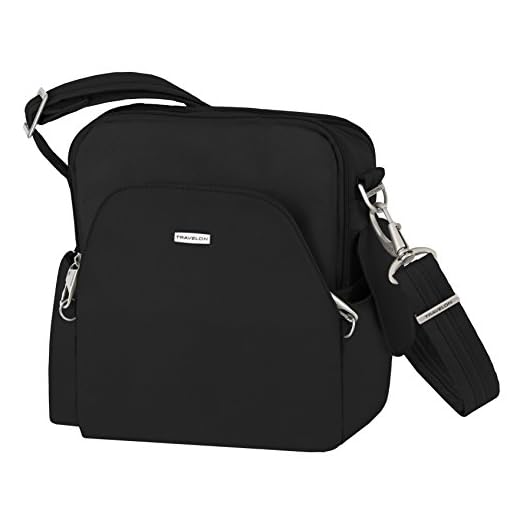





To minimize the risk of triggering security notifications during screening, it’s advisable to use TSA-approved locks on your travel bags. These locks can be opened by TSA agents using universal keys, allowing them to inspect contents without damaging the lock or bag. This is a practical measure to ensure a smoother experience at checkpoints.
Another effective strategy is to pack wisely, avoiding items that are frequently flagged during inspections. Prohibited or restricted items, such as certain tools or liquids over the allowed volume, can cause disruptions. Familiarize yourself with the list of forbidden goods to ensure compliance and reduce the chances of alerting security personnel.
Be mindful of how items are stored within your carry-on. Organizing belongings neatly and using clear, resealable bags for liquids can streamline the screening process. This approach not only makes it easier for agents to check items but also minimizes the likelihood of your bags needing further inspection.
Lastly, pay attention to your baggage’s weight and dimensions. Oversized or overweight bags can draw additional scrutiny. Checking airline guidelines before travel helps to ensure your bags meet required specifications, preventing unexpected delays and complications at security checkpoints.
Alerts Related to Security Bags
Consider using high-quality locks approved by security agencies. These locks can ensure that your possessions remain secured while allowing authorities easy access for inspections.
Regularly inspect your travel gear for built-in security features. Some bags incorporate alarms that activate if tampered with, protecting your belongings during transit.
Be aware of specific regulations regarding size and content that might trigger alarms during checkpoints. Familiarize yourself with restricted items and adjust your packing accordingly to avoid delays.
Use a tracking device in your bag. This gadget can notify you if your belongings are moved unexpectedly, providing an extra layer of security during your travels.
Always label your bags with clear identification, including your contact information. This allows for easy return in case your bag is lost or mishandled, minimizing stress during your journey.
Consider matching your travel patterns with updated alerts from airlines and security agencies. Staying informed on potential issues can help you prepare and adjust your travel plans as necessary.
Understanding TSA Luggage Inspection Procedures
Frequent travelers should familiarize themselves with the protocols for baggage examination. The process involves several steps that ensure security without compromising efficiency. When your suitcase goes through the scanner, the operator assesses its contents and may flag items for further inspection based on standard criteria.
Belongings that typically concern screeners include electronics, liquids exceeding permissible limits, and any tools or sharp objects. If a bag is selected for a manual review, expect a TSA agent to consult with the owner for clarification. Awareness of inspections can reduce anxiety and enhance the travel experience.
Opting for organized packing can facilitate smoother screenings. Consider using clear, resealable bags for liquids, and ensuring that all items are easily accessible. This approach minimizes delays and may even contribute to a more favorable assessment by security personnel.
Additional recommendations include checking the latest restrictions on permitted items before travel. For those interested in tackle or fishing gear, investigate options like the best light umbrella rig rod to ensure compliance with transport regulations.
Staying informed about current regulations and being prepared can significantly streamline the examination experience. Keeping abreast of the latest travel requirements contributes to a more enjoyable journey.
Common Items That Trigger Security Detectors
Many everyday objects can set off detection systems during baggage assessments. Familiarizing yourself with these items helps streamline your travel experience.
Prohibited Items
Items such as sharp objects, firearms, and explosives are obvious triggers. Here’s a list of commonly known items:
| Item | Reason for Triggering |
|---|---|
| Knives | Sharp edges detected |
| Guns | Metal components |
| Fireworks | Explosive materials |
| Axe | Sharp, heavy object |
| Tools | Metallic items over certain lengths |
Additional Triggers
Other common items that might raise concerns include:
- Large electronic devices
- Liquid containers exceeding limits
- Cables and wires
Being aware of these items reduces the risk of delays during screening. Always check the regulations specific to your carrier or destination.
What to Expect During a TSA Luggage Search
Be prepared for a thorough examination of your belongings. Security personnel may ask you to remove specific items from your bag, including laptops and liquids, placing them in separate bins for easier inspection. Ensure your belongings are easily accessible to expedite this process.
Physical Inspection
In some cases, agents might perform a manual search of your items. This involves opening bags and inspecting the contents. Cooperation is key; always follow their guidance to maintain a smooth experience.
Technology Checks
Advanced scanning equipment may be utilized, including 3D imaging technology. Remain confident if your bag is flagged; it simply means it requires additional scrutiny. Avoid packing prohibited substances to minimize complications during these checks. For outdoor gear enthusiasts, consider how items like the best outdoor umbrella with solar lights may be treated under these regulations, ensuring they comply with safety standards.
Tips for Avoiding TSA Alarm Triggers
Opt for travel-sized toiletries. Containers must be 3.4 ounces (100 milliliters) or less and fit into a single quart-sized bag.
Organizing Your Bag
- Place electronics, such as laptops and tablets, in an easily accessible section to facilitate inspection.
- Keep food items separate from other belongings to minimize confusion during scanning.
- Utilize packing cubes to maintain order and aid agents in identifying contents quickly.
Avoiding Restricted Items
- Check updated lists of prohibited articles before packing. Commonly banned objects include sharp items and flammable materials.
- Ensure all liquids, gels, and aerosols comply with regulations regarding size and packaging.
- Steer clear of bringing any suspicious or unusual items that may raise questions during screening.
Double-check your belongings after packing to confirm that only permitted items are included.
How to Respond if Your Luggage Triggers an Alarm
Immediately remain calm. If security personnel approach you, communicate politely. Follow their instructions without hesitation.
Be prepared to open your suitcase for inspection. Have all necessary items easily accessible to expedite the process. This includes removing electronic devices and liquids, which are common points of interest.
Provide any necessary documentation, such as a boarding pass, and answer questions truthfully. If you are carrying any unusual items or gifts, explaining their purpose can help clarify and expedite the review.
In some cases, a secondary screening may be necessary. Understand that this is a standard procedure designed for safety. Maintain a cooperative attitude to facilitate a swift resolution.
If you suspect your belongings have an odor that may raise concerns, such as from pets, it’s advisable to address any potential issues beforehand. For example, knowing how to clean cat piss from mattress can prevent unpleasant surprises during security checks.
Finally, once the inspection is complete, double-check your suitcase before closing it and ensure all items are returned to their original place. This confirms you have everything before moving on.







